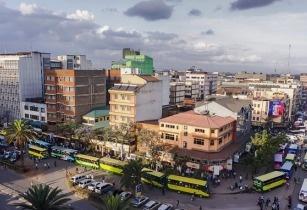Policymakers need to profoundly understand Africa’s growing urban geography that is set to seize new opportunities, according to the Sahel West Africa Club/ Organisation for Economic Co-operation and Development (SWAC/OECD) report
Fuelled by rapid population growth, Africa is experiencing the fastest urban growth in the world. The continent’s population is projected to double by 2050 and in the next 30 years, its cities will be home to an additional 950 million people.
The report, entitled Africa’s Urbanisation Dynamics 2020: Africapolis, Mapping a New Urban Geography, was launched at an event jointly organised with the African Union Development Agency (AUDA-NEPAD) on the margins of the 33rd African Union Summit in Addis Ababa, Ethiopia.
Dr Ibrahim Mayaki, AUDA-NEPAD’s CEO and the Sahel and West Africa Club (SWAC) honorary president, urged participants at the launch to think about the continent's urban geography differently, stating that policies need to catch up and be more multi-dimensional and inclusive.
A major challenge is the lack of available data and evidence to better inform policy-making. The spatial approach adopted in this report identifies and tracks the transformations taking place on the ground and describes the underlying forces behind local, regional and continental urbanisation.
According to the report, the continued emergence of small and intermediary cities — 210 million Africans live in one of the continent’s 1 400 intermediary cities — is driving a fundamental shift in Africa’s urban landscape. This trend is challenging the primacy of the African megacities that have until now attracted a large share of human and financial capital, leading to uneven economic growth at the expense of secondary cities and rural areas.
The necessity to develop new policies to reconcile urban and sustainability concerns
Africa’s small and medium-sized urban agglomerations are developing most often without the necessary policy support or investments to render this growth sustainable and translate it into better social and economic outcomes for its citizens.
Yet, medium-sized cities and small towns are vital in structuring the African urban network and connecting the local and regional to the continental and global levels. There is an urgent need for socio-economic and financial policies to reflect their growing importance in programming and planning decisions, suggests the report.
The diverse and multifaceted nature of Africa’s contemporary urban transition gives rise to novel forms and scales of urban development. In several countries, new settlement and mobility patterns lead to the emergence of large metropolitan regions around metropoles with high urban concentration.
As assessed by the report, this structure of urban dynamics, sometimes across borders (e.g. the Greater Ibadan-Lagos-Accra corridor), displays strong potential for regional integration, while at the same time creating a disconnection from the rest of the national territory.





